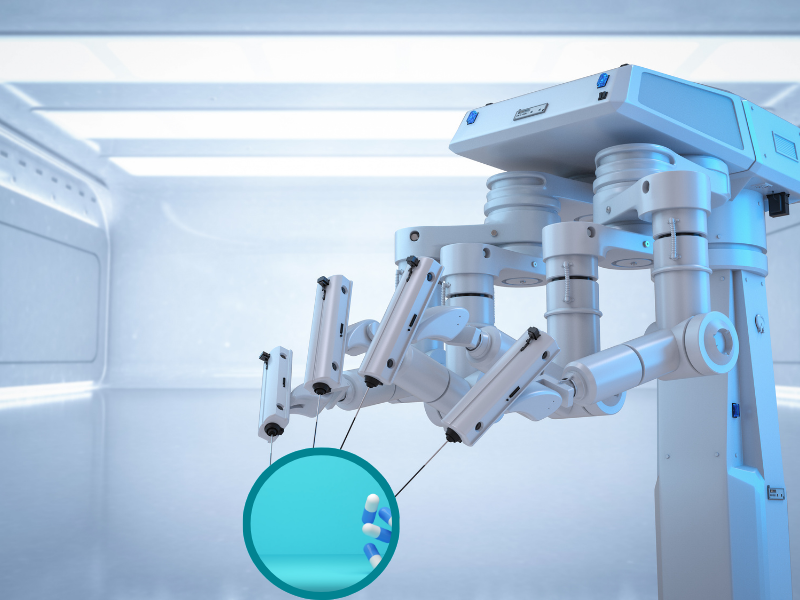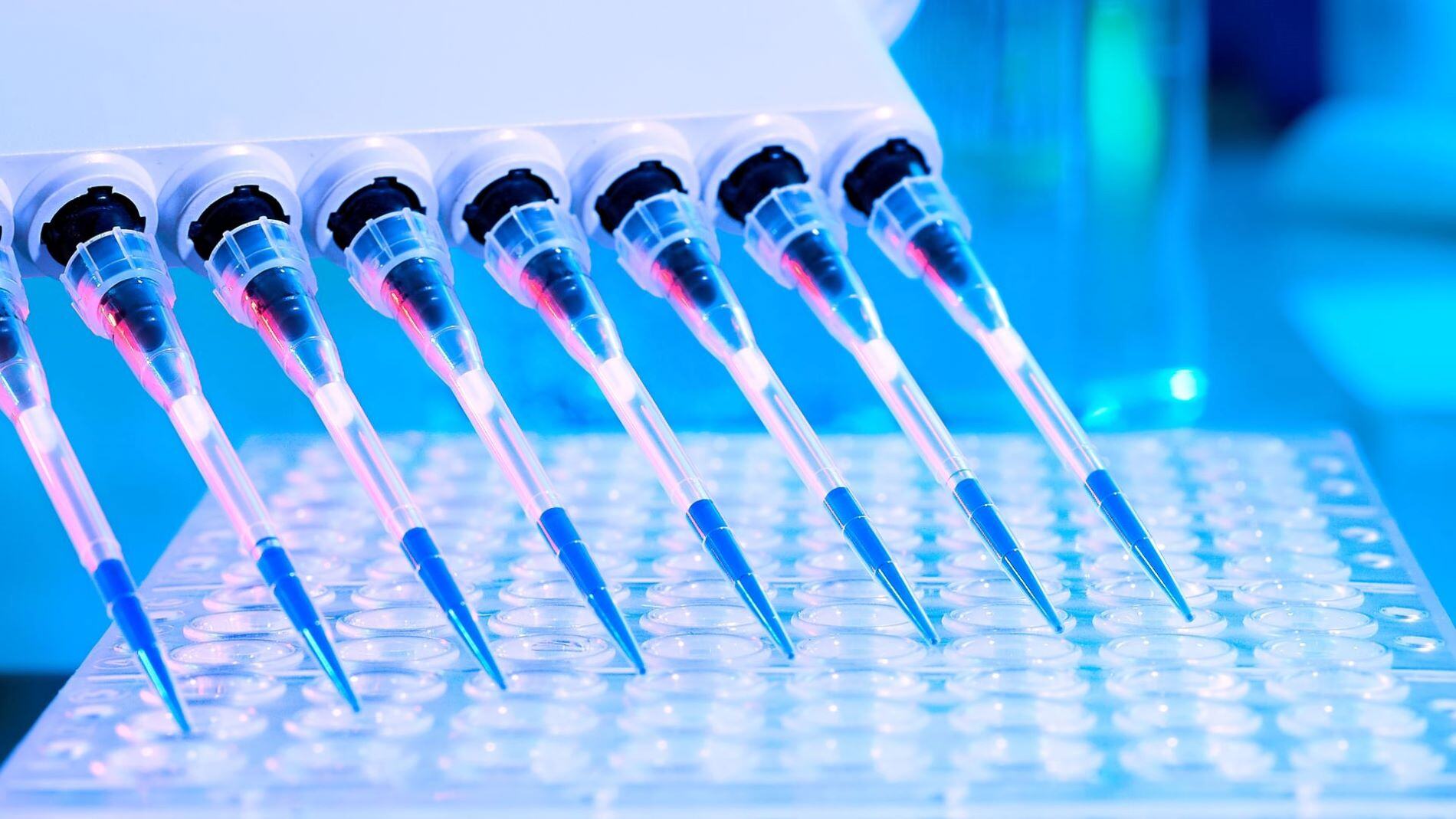Pharmaceutical Automation and the Factories of the Future: How Will the Industry Look in 2030?

A central focus of current discourse around the adoption of automation in smart labs concerns its implementation in line with industry requirements. Many of the technologies currently being introduced, such as automated liquid handlers, are brought in to streamline production. However, the lack of a blanket approach across the industry can hamper the implementation of pharmaceutical automation approaches to procedures such as aseptic production.
Pharmaceutical Mobile Robotics 2022: In-Person featured a panel discussion centred on the current landscape of automation in the pharmaceutical industry, and explored where it could be by the end of the decade.
The panel included Markus Stübchen, Global Robotics Network Team Lead at F. Hoffmann-La Roche Ltd, who began his career in Hoechst AG as a process engineer. Stübchen started out in plant upkeep regarding materials, before moving to Roche in 2008 to head plant maintenance and subsequently progressing to global engineering in 2016. “Back then, the initiative was around building a new facility model,” he said. “We — as a lot of other colleagues in pharma — experience a significant change in product families.”
Rikke Degn and Martin Søndergaard Andersen work with technology innovation for Novo Nordisk's aseptic production facility. As a Specialist at Novo Nordisk, Degn has 14 years’ experience with aseptic production and is responsible for environmental monitoring in the aseptic production of diabetes finished products. Andersen is a Project Manager who oversees research into the implementation of mobile robots into pharmaceutical production.
Collaborating on Best Practice Approaches in Problem-Solving
Discussion began with an overview of best practice approaches in the proper implementation of new automation frameworks. Stuebchen replied that as well as having the correct equipment on-hand, another key aspect would be involving the suppliers of components and packaging materials. “Right now, we build our machinery around a variety of containers,” he explained. “All of our suppliers’ tubs have different geometry, why can’t we simply agree on standardized containers?”
“We need to meet on neutral ground somewhere,” concurred Andersen. Stübchen had previously suggested developing a common lab for robotic technology in Pharma, which Andersen praised as a very good idea. “I think we can expand that idea into having aseptic production as well,” Andersen continued. “We can have some neutral ground where we can prototype.” He added that his facility at Novo Nordisk has a sandbox environment which was a good representation of this. “Somewhere we can physically test things is a good next step.”
Degn explained that there was a tendency towards making a custom solution for a specific problem rather than utilising a solution that could be adapted for broader use. “I think what we are trying to change at the moment — at least within Novo Nordisk — is we want to be able to use off-the-shelf solutions.” To counteract this, Degn said that Novo Nordisk was increasingly focusing on implementing a more modular approach. “The recent technologies that we’ve developed, we have developed with a vendor,” she said. “We have said that it’s okay for the vendor to use those technologies for themselves.”
Pharmaceutical Automation and the Shape of the Industry in 2030
Discussing potential innovations in the pharmaceutical industry for the end of the decade, Degn hoped to see more steps of the overall production process consolidated into one facility. “We should have QC on-site so we don’t send samples away, we just do the analysis close to the site of operations,” she said. She also extolled the benefits of a robotic filling isolator, along with automated transportation for samples. Andersen agreed, stressing a need to also consider how machines fail if the industry was moving towards implementing fully automated operating systems.
“The machine never has to be 100% functional... but if it knows that something's wrong and it could account for that, it could be a big step in improving process efficiency.”
“Without people being available to operate it and fix things, the machine stops,” Andersen said. “Then the humans have to figure out how to fix it.” If failure is accounted for in the planning and development stages, machines involved in pharmaceutical automation can recognise when a fault develops and react accordingly. “The machine never has to be 100% functional because that’s impossible,” continued Andersen, “but if it knows that something’s wrong and it can do something to account for that, it could be a big step in improving process efficiency.”
Haptic Control and AI in Manufacture
Haptic control — the remote manipulation of a device through a kinaesthetic input — has been another area of investigation for Novo Nordisk in recent years with regards to accelerating aseptic production. “We’re trying to implement something that works as a proof-of-concept,” said Andersen. “One solution could be that we have some teleoperation that you can use to control the robots.” This approach could also be used to enable the machine to bypass component failure. “If something goes wrong, we don’t necessarily just want to add a process to go around it. We want to help it do something clever.”
- 2022's Biggest Hits: Oxford Global's R&D Top 40 Stories
- Developing Improved Approaches for Cleanrooms Through Applied Mobile Technologies
- What are the Applications of Real-World Datasets in Healthcare?
Stübchen added that AI would likely play a role in his own remit, although this depended on the nature of the business. “I don’t know if this is something that we’ll still be talking about in 2030, but already when we’re talking about personalised cancer vaccines, I imagine we could make significant steps in that direction,” he said. “We could also make steps in terms of bringing the sites to the hospitals, rather than coping with cumbersome transportation tasks linked to cool chains and loss of valuable time.” By utilising advances in AI and technology to automate more time-intensive tasks, researchers and developers will have more resources available for specialised areas.
Accelerating Pharmaceutical Automation Through Standardisation
Standardisation has long been an obstacle in the pharmaceutical sphere. More consistent guidelines on usage would make the implementation of mobile robotics and other automated machinery easier. However, galvanising the industry at large to adopt this approach has proven challenging. “Standardisation of what we are handling would be a major step for us,” offered Stübchen. “As long as we use seven types of stoppers for five types of products, and as long as containments for primary packaging material tend to look different depending of which suppliers we are using, we are not getting anywhere.”
“We’re on the same page if I talk about a standardisation of regulation,” said Andersen. “Otherwise we end up with 1,000 different ways of handling the same issue. If we standardise the way we work with the authorities, we can accelerate our progress here.” Degn concurred, saying she agreed with everything that had been said. “I think maybe we could also reduce our CO2 footprint a bit, that would be great.”
Integrating new frameworks and approaches in the remit of pharmaceutical automation can be difficult as the industry can be hesitant to embrace new technologies. As such, any change in approach is more likely to result from cooperation across the board. “We need to speak with one voice when it comes to handling these issues,” Stübchen concluded.
Want to read more about how the pharmaceutical factory of the future will look? Head over to our PharmaTec portal to see the latest insights from the industry’s best and brightest. If you’d like to learn more about our upcoming Pharma Automation & Robotics conference, visit our event website to download an agenda or register your interest.







